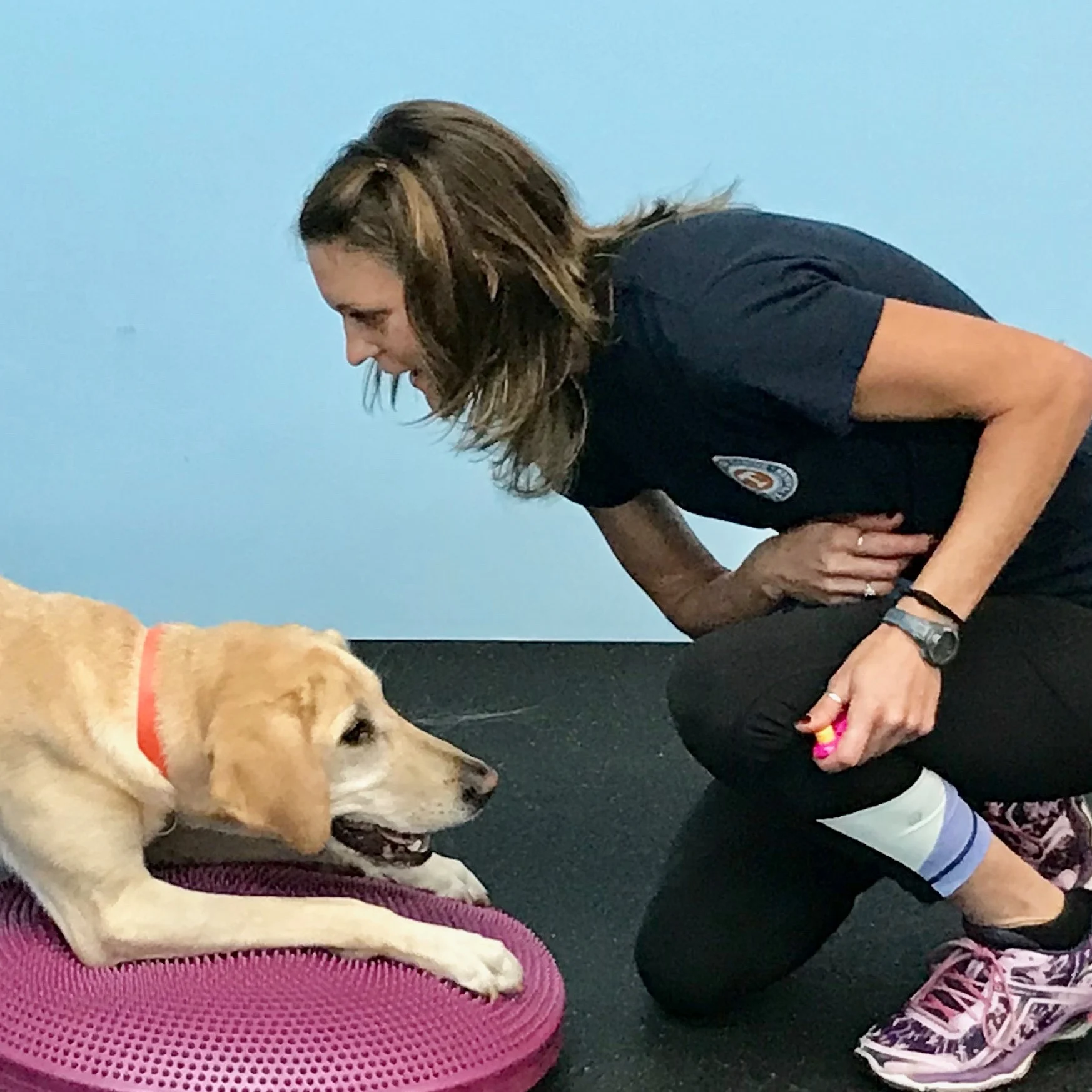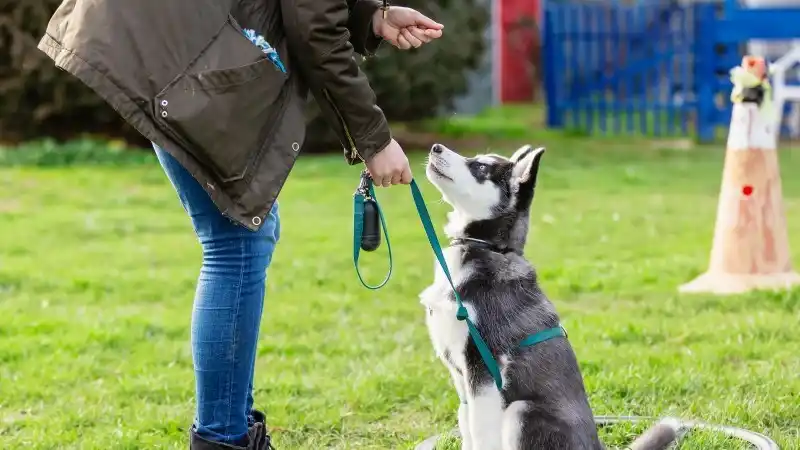Baby-Steps Teaching Your Dog to Swim
Sometimes fear of water is harder to get over than you might think... but there is hope! Follow these "baby-steps" to get your dog swimming in no time.

Swimming is a fabulous way to exercise your dog. Having a swimming dog allows you to take your dog on some of your water adventures! You learned many helpful dog swimming tips in this blog. Read on for a detailed break-down of how to train your dog to gradually get into the water. The goal is to make your dog like the water, so you don’t want to force him too quickly into the water. Use baby-steps and make each little increment of the experience positive and fun.
Acclimate your dog to the environment.
Start with your dog in a fitted dog life vest and on a leash – the leash should be attached to the top of the life vest or a harness under the life jacket. At a pool, walk your dog around the pool twice so he can sniff around and explore. Be careful that neither you nor your dog accidentally fall into the pool. At a lake or other body of outdoor water, walk your dog on the shoreline of your “training area.”
Walk your leashed dog within one foot of the water.
If you’re working near a pool, begin walking up to the safe pool entrance for your dog so he builds the pattern that this is always the side from which he enters and exits the water – that way, your dog won’t think he can just fling his body into any area of the pool or think he should try to shimmy out the sides of the pool that don’t have a ramp or stairs. This safe entrance area should be the shallow end of the pool with dog-friendly steps or a dog-friendly ramp. Go one foot from the water and treat your dog for being calm while facing the direction of the water. All treats will happen with your dog facing the water and walking towards the water – no treats will happen when your dog is leaving or if your dog attempts to leave. Retreat away from the water before your dog has a chance to get nervous. Repeat this drill a few times.
Walk your dog so that his front two paws are in the water.
Treat and praise your dog when he gets his front paws wet and when he is giving forward motion (walking) toward or wading in the water. Leave and then repeat this drill a few times - each time getting deeper into the water. It’s okay to pull your dog’s leash to gently guide him away from the pool, but do not use his leash to force him towards the water.

Every Dog and Cat Deserves the Pet Insurance of Champions
Get prize-winning care for your pets.
Walk your dog so that all four paws are in the water and he is still facing the body of water.
Treat and praise as your dog progresses further with his wading. It’s helpful if you face the body of water, too, so it looks like both you and your dog are walking straight into the water. If you’re facing side-ways towards your dog, your dog will wonder if he should be facing and walking side-ways, too (he shouldn’t). Exit the water when your dog is serene and then repeat the repetition.
Gradually increase how many steps your dog takes into the water until he is up to his belly.
Continue to use treats and praise to affirm that your dog is doing an amazing job. Keep the tone of your voice upbeat and self-assured. Consider using a floating toy to play with your dog while his paws are in the water or to have your dog retrieve in the shallow water.
Gently boost the dog into the water.
Your dog may need assistance to help take that fateful first step off the pool ramp or stairs or into the lake in which his paws will no longer touch the ground. Pick up your dog by the life vest by using one hand on the front handle or front section of the life vest (behind his collar above his spine) and the other hand on the back end of the life vest (near the base of his tail). Place your dog in the water. If you’re in a pool, have your dog swim a “J” or “U” shape back to you or the ramp. If you’re in a lake, you may need to go out and swim with your dog unless your dog is willing to retrieve a toy before returning to you. Toys can be a huge motivator for dogs to swim, so use that tool if you have a retrieving hound. Enthusiastically commend your dog for his swimming and treat him!
When you boost your dog into the water, guide him so that his spine is parallel to the water. You do not want to accidentally head-dunk your dog. It may take five or five hundred repetitions until your dog is ready to launch himself into the water without your physical guidance. Pushing off the ground so your dog is officially swimming does take muscle memory – your dog needs to practice that skill to master it.
Use puppy pals as good examples.
Dogs may learn by watching other dogs. If your dog has a canine buddy who swims, let your dog watch that canine enjoy swimming and allow your dog to follow that pup into the water.

Every Dog and Cat Deserves the Pet Insurance of Champions
Get prize-winning care for your pets.

Jasey Day holds the Certified Canine Fitness Trainer (CCFT) credential through the University of Tennessee. She is a member of the Bobbie Lyons K9FITteam - a team of compassionate canine fitness instructors who actively teach others and continually expand their own knowledge. Since 2004, Jasey has taught a variety of workshops and classes on the following: Puppy, Canine Good Citizen/Family Pet, Advanced Family Pet, Canine Fitness, Canine Swimming, Rally, and Agility. In addition, Jasey has earned over 60 titles in Dock Diving, Agility, Rally, CGC and Trick Dog. Jasey has worked full time for the American Kennel Club since 2007 and teaches at Care First Animal Hospital in Raleigh, NC. Jasey’s Labrador Retrievers spend their free time hiking, training, and snuggling with Jasey.
READ MORE ARTICLES

